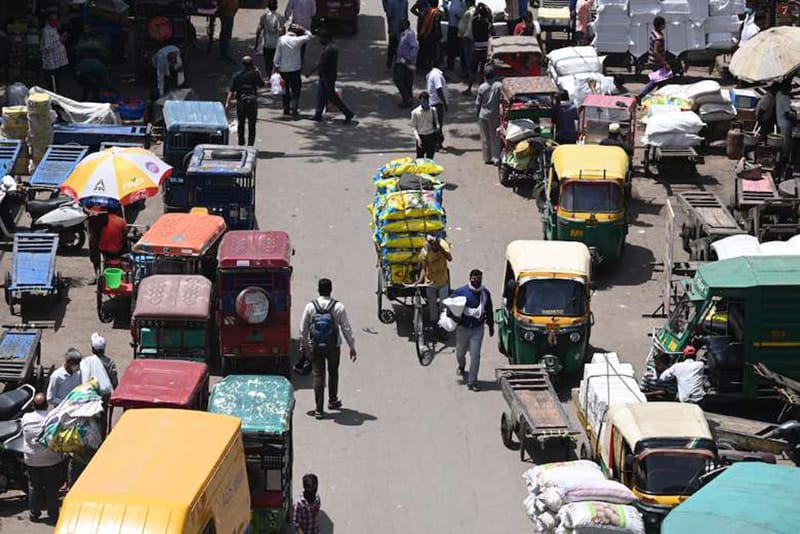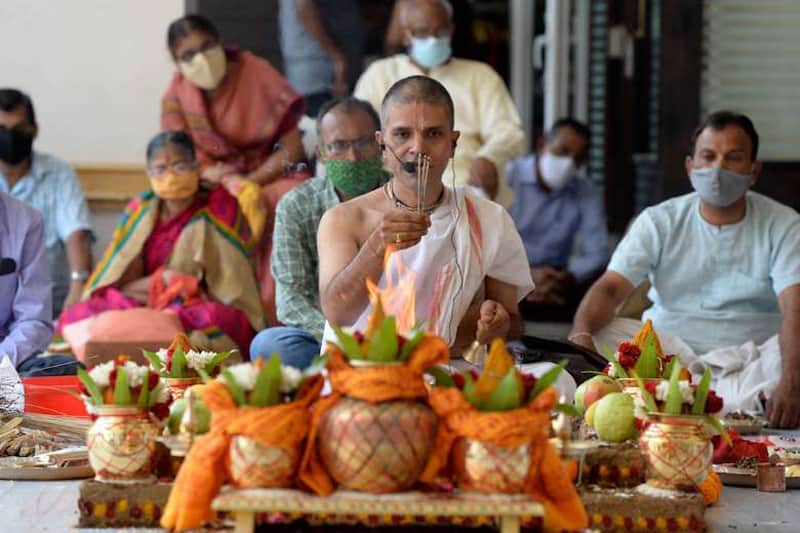Migrant workers ignore Delhi chief minister’s plea to stay put and head back to their home villages in India.
Nirendra Dev, UCANews
Thousands of migrant workers are flocking to rail and bus stations in and around India’s national capital in their attempt to move back to their native villages after a six-day COVID-19 lockdown started on April 19.
With their packed bags, thousands of workers with women and children are seen bickering for tickets in bus and railway stations, ignoring all COVID-19 protocols.
The scenes were reminiscent of the unprecedented horror of migrant workers walking back to their villages hundreds of kilometers away during the first nationwide shutdown that began on March 25, 2020.
The government estimated that at least 1 million migrant workers from all across India moved back to their villages during the 68-day lockdown. At least 80 died on the way, mostly because of lack of food, water and rest.
After the latest lockdown, a migrant worker told UCA News that they have “no option” but to leave New Delhi as the lockdown takes away their temporary jobs, pushing their families to poverty without basic food and accommodation.
“Last year also, some of us went through this. I had lost my previous job,” said Raju Pandey, a migrant worker from Bihar.
He recalled media reports that this time cases were increasing faster than last year “and so there is every chance the lockdown will be extended.”
The Delhi government imposed the week-long lockdown after the city began to report more than 25,000 new cases daily since last week. Hundreds are dying as the city hospitals lack beds and basic facilities such as oxygen.

People make their way along a street in the old quarters of New Delhi on April 19 as India’s capital prepares to impose a week-long lockdown. (Photo: Sajjad Hussain/AFP)
Delhi Chief Minister Arvind Kejriwal announced the lockdown on April 19, saying the government had no other way to check the pandemic’s spread. However, he also appealed to migrant workers not to leave the city.
“I know when lockdowns are announced, daily wage workers suffer and lose their jobs. But I appeal to you not to leave the city. We will take care of you,” Kejriwal said in a televised address.
But the movement of migrants suggests they have little faith in the words of Kejriwal or even the federal government of Prime Minister Narendra Modi after authorities did little to address their woes last year.
Besides, the government went against its own promises on lockdown, noted Vibhuti Sen, a migrant laborer in a fish market from West Bengal.
“We thought they had learned lessons. But in just a matter of few days, the Delhi government and the chief minister changed their stance multiple times,” he said.
Initially, Kejriwal and his ministers kept saying Delhi would not see another lockdown, but then they imposed a night curfew.
“But as nothing worked and the cases began to increase, we now have a week-long lockdown. What is the guarantee that it will not be extended to a month or more?” asked Sen, echoing the general fear among migrant workers.
Another migrant laborer from Uttar Pradesh accused the authorities of turning “a blind eye to our agony.”
“Moreover, the reports of a shortage of oxygen and medicines in city hospitals only indicate that these guys do not have any control over the situation. Poor people suffer the most. Is it not better to die in our own homes?” he asked.

Hindu priests perform a ritual wishing to globally eradicate the coronavirus pandemic at a temple in Hyderabad, India, on April 13. (Photo: Noah Seelam/AFP)
In March-April 2020, migrant laborers were faced with a similar situation when Modi announced a complete lockdown that shut down all transport systems and markets with only four hours’ notice.
But a Delhi government official said the “high drama of 2020” will not be repeated. “This time we are cautious. Once the initial panic gets over, things will be calm and they will be looked after,” he told UCA News.
India’s workforce is estimated at one-third of its 1.3 billion population but only 10%-12% of them enjoy the benefits of a fixed salary. An estimated 23% or some 300 million people live on less than US$2 a day.
Poverty and political factors will combine to create a crisis of reverse migration, according to political observer Vidyarthi Kumar.
“One thing is certain — there was no lesson learned from 2020. Be it in Mumbai or Delhi, the migrant workers are suffering,” he said.
In 2020 and this year, he said, the authorities failed to anticipate the exodus of migrants or make plans to address their plight.
Kumar said the story is similar in Maharashtra too. India’s most industrialized state is in a curfew-like situation from April 14 to May 1.
Featured image: People board a bus in New Delhi on April 20 to leave for their native places as India battles a record-breaking spike in COVID-19 infections that has forced the capital into a week-long lockdown. (Photo: AFP)

